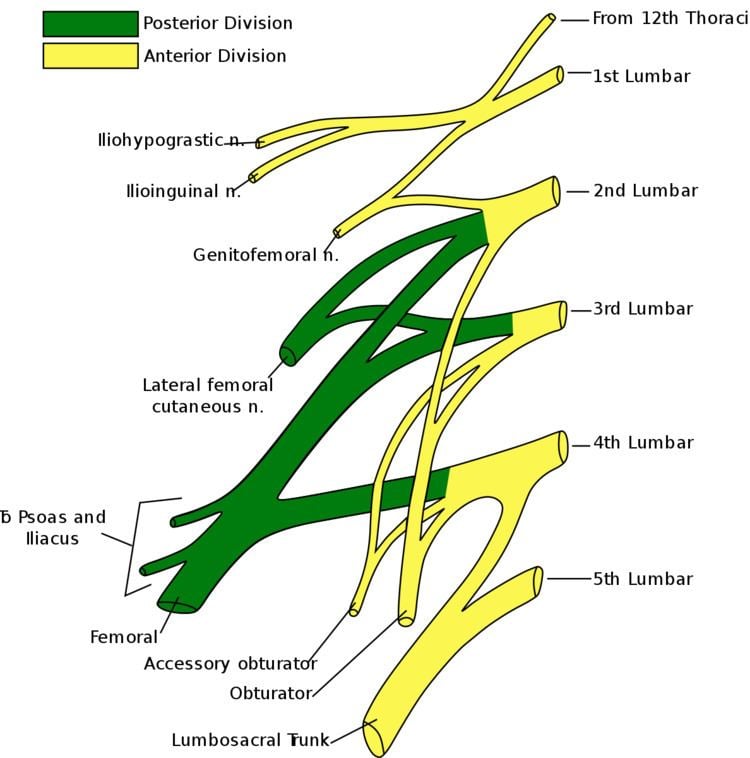Dorlands/Elsevier n_05/12565836 | Innervates cremaster TA A14.2.07.008 | |
 | ||
Latin Nervus genitofemoralisNervus genitalifemoralis | ||
The genitofemoral nerve refers to a human nerve that is found in the abdomen. Its branches, the genital branch and femoral branch supply sensation to the upper anterior thigh, as well as the skin of the anterior scrotum in males and mons pubis in females. The femoral branch is different from the femoral nerve, which also arises from the lumbar plexus.
Contents
Anatomy
The genitofemoral nerve originates from the upper L1-2 segments of the lumbar plexus. It passes downwards, pierces psoas major and emerges from its anterior surface . The nerve divides into two branches, the genital branch and the lumboinguinal nerve also known as the femoral branch, both of which then continue downwards and medially to the inguinal and femoral canal respectively.
Genital Branch
The genital branch passes through the deep inguinal ring and enters the inguinal canal. In men, the genital branch supplies the cremaster and scrotal skin. In women, the genital branch accompanies the round ligament of uterus, terminating in and innervating the skin of the mons pubis and labia majora.
Femoral Branch
The femoral branch passes underneath the inguinal ligament, travelling through the lateral muscular compartment of the femoral canal where it communicates with the femoral nerve. Passing through the cribriform fascia of the saphenous opening of the fascia lata of the thigh, it then supplies the skin of the upper, anterior thigh.
Function
The genitofemoral nerve is responsible for both the sensory (femoral branch) and motor portions (genital branch) of the cremasteric reflex, which describes contraction of the cremasteric muscle when the skin of the superior medial part of the thigh is touched.
